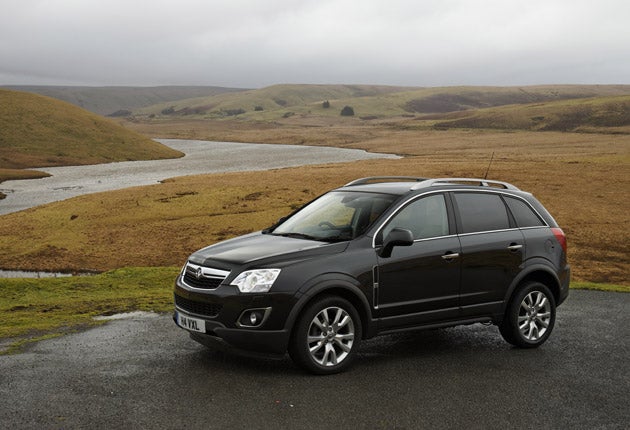Vauxhall Antara 2.2 CDTi 184 SE
After a false start, Vauxhall has overhauled its crossover SUV – and made a good job of it, too

Have you ever seen a Vauxhall Antara on the road?
Nor had I until last week, except at the original press launch in Wales three and a half years ago. It's not surprising, really, because barely 1,000 examples of this Korean-made, Euro-badged SUV have made it on to our roads each year since 2007.
It is hard to pinpoint why the Antara flopped. There was much about it that I quite liked on that launch, with its obviously Vauxhall/Opel styling and tidy dynamics on twisty, bumpy roads. I suspect the main reason was that neither of its engines – a 2.0-litre diesel and a 2.4-litre petrol – was much good. Both were Korean designs, from the former Daewoo operation, and were particularly unresponsive. The manual diesel Antara felt as if you were driving it in wellington boots.
A single test drive would have showed the engines at their worst, for it was only on the open road that they woke up. Anyway, they have gone and the remodelled Antara has a new heart.
The remodelling takes in the bonnet, the bumpers, the front grille and the lights, and it's a good update on an already satisfactory shape. Inside, the ambience is of higher quality, thanks to more expensive-feeling soft trim and tidier instrument graphics, although the lower-grade "Exclusiv" trim level has rather nasty fake walnut embellishment. The grander SE, at £25,455, has a more plausible aluminium look. All new Antaras have an electric parking brake to free more space in the centre console. I hate the things, but you may disagree.
Possibly more important than the cosmetics are the new engines. Actually, there's only one for the UK market, a 2.2 turbodiesel project-managed by GM Powertrain in Turin, part-developed by AVL in Austria, and additionally engineered by GM in both the US and South Korea. With a choice of 163 or 184bhp, it is entirely unrelated to the diesels used in European-made Vauxhalls, unlike the gearbox now shared with the Vauxhall Insignia.
As before, the engine drives either the front wheels only or, for an extra £2,350 in the 163bhp SE and as standard in all the other versions, all four wheels if conditions demand it. Mostly the Antara behaves as a front-wheel drive car, but up to half of the engine's efforts can be sent to the rear wheels via a simple viscous coupling if the front wheels lose some grip.
There's more. Dr Christian Bielaczek is Vauxhall/Opel's "vehicle performance manager" for the Antara, which means he was responsible for making it drive the way it does. He thought the old model was dreadful. "It was developed in Korea and we had very little to do with it," he said. "So this time we had the chance to change a lot of things."
So what was wrong with it? "The driving precision didn't give you enough confidence." What his engineers have done is to make the suspension's mountings more resistant to lateral forces (steering and cornering) and more absorbent of longitudinal forces (bumps). Also, the steering mechanism is now solidly mounted to the structure instead of via a rubber mount.
Result? Having banished the "not invented here" spectre, Dr B has made what I thought was already quite a decent SUV into a very pleasing one. It does steer more precisely, it does feel confident and the whole car, not just the suspension, is a lot quieter. Livelier, too; not only is the new diesel particularly smooth and restrained, it also has an immediate punch in its response. And, naturally, it emits less CO2.
No doubt few owners will venture seriously off-road, but the 4x4 Antara can cope well if you do. It has plenty of wheel articulation for uneven surfaces, plenty of clearance under each end, and a hill-descent control to apply the brakes automatically as needed. It works.
So, should the SUV-lover consider an Antara? Certainly, because this time it's the finished product, engineered to proper European standards. We might even start seeing them on the roads now.
The Rivals
Ford Kuga 2.0 TDCi 4WD 163 Titanium: £24,995, 163bhp, 159g/km
Top model is smaller than Antara, has much bling, feels keen and handy on Focus-derived mechanicals.
Honda CR-V 2.2 i-DTEC ES: £25,200, 150bhp, 171g/km
Looks like a car sitting on top of another, but is comfortable, quiet and responsive with a clever four-wheel drive system.
Kia Sportage 2.0 CRDi KX-3 4WD: £24,420, 136bhp, 156g/km
Korean brand, striking design, good finish, cuts a dash. High waistline makes it feel bulky. Hyundai iX35 is a close relation.
Join our commenting forum
Join thought-provoking conversations, follow other Independent readers and see their replies
Comments